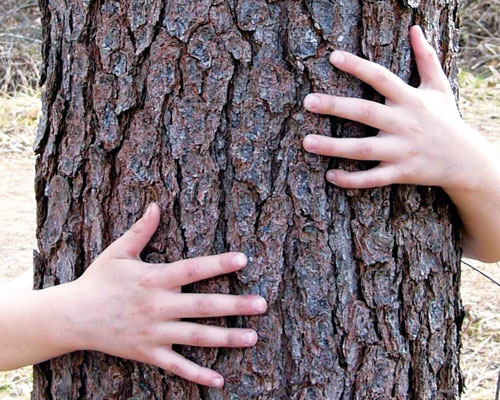In addition, children who spend meaningful time playing and learning in nature develop a love for the natural world that translates into conservation behaviors and an adult stewardship ethic.
The flip side: The costs of not connecting children and youth to nature are significant. Consider the health consequences, as an example. Children are more active when playing and learning outdoors than indoors. Inactivity promotes obesity. According to the Centers for Disease Control, obesity has quadrupled in the past fifty years, contributing to risk factors for chronic diseases. Some risk factors and diseases, such as high blood pressure and Type II diabetes, are now developing in childhood rather than adulthood. The U.S. Surgeon General has suggested this may be the first generation of children to not live as long as their parents.
Just as their disconnection from nature compromises children's health, the health of the planet is jeopardized by a generation of children who have not developed a sense of wonder and love for the natural world and, therefore, the motivation to protect it.
There is a movement afoot to reconnect children to nature. Ever since Richard Louv sounded the alarm in his 2008 book Last Child in the Woods: Saving Our Children from Nature-Deficit Disorder, a growing number of parents, professionals and policymakers have been made aware of the dangers of isolating children and youth from nature, and the considerable benefits of reconnecting them. Louv co-founded Children and Nature Network (C&NN), which leads the movement to connect children, families and communities to nature through innovative ideas, evidence-based resources and tools, broad-based collaboration and support of grassroots leadership.
C&NN has helped spread the message of urgency: It is critical that youth have meaningful opportunities to learn and play in nature, yet there are many challenges to doing so. Although technology provides us many advantages, it has its risks. The Kaiser Family Foundation estimates that many children spend forty to sixty-five hours weekly connected with electronic media—a full-time job! Busy activity schedules and parental safety concerns limit children's freedom to learn, play, explore and relax outdoors. Children used to routinely roam up to a mile from home; now, their roaming range is measured in feet. Schools are increasingly under pressure to improve academic performance. This often means increased seat time and fewer opportunities for outdoor time, whether recess or nature-based learning, despite evidence that play and learning in the natural environment results in developmental and academic benefits.
Afterschool programs can fill an important gap. Regardless of participant age, two key concepts should guide afterschool program professionals' efforts to deepen meaningful engagement with nature.
The first, "playful engagement," likely takes the form of free play during which young children create their own play activities—often using "loose parts" found in nature, without adult direction. For older children this concept might be embodied in youth-directed recreation and learning, with freedom of choice and the provision of plenty of natural materials and nature-based settings. More playful engagement, as opposed to structured programs or adult-driven activities, is associated with greater cognitive, social, and emotional learning and development. Playful engagement is not a free-for-all; the adults supervising free play are integral to shaping youth experiences.
The second concept involves using the natural environment as the "integrating context" in which youth can construct their own learning, supported by adults, to enhance general and disciplinary knowledge, thinking and problem-solving skills, and social-emotional skills. Simply holding an activity outdoors is using nature as a backdrop, rather than utilizing nature as the teaching tool. The former does not yield the learning and development benefits the latter provides.
It takes skill to support children and youth's play and learning in nature. Professional development is key. Resources, such as the Natural Teachers Network e-guide, are available through C&NN. Its website provides other practical resources, summaries of the research evidence, and a platform to promote community connections to support families, schools, libraries, doctors, teachers, and whole cities to create access to nature for all children.
The afterschool professional community has something to offer and gain from this movement. Check out C&NN's resources and be part of the discussion.
Written by Cathy Jordan, PhD, Associate Professor of Extension and Pediatrics, University of Minnesota, Consulting Director of Research, Children and Nature Network.

